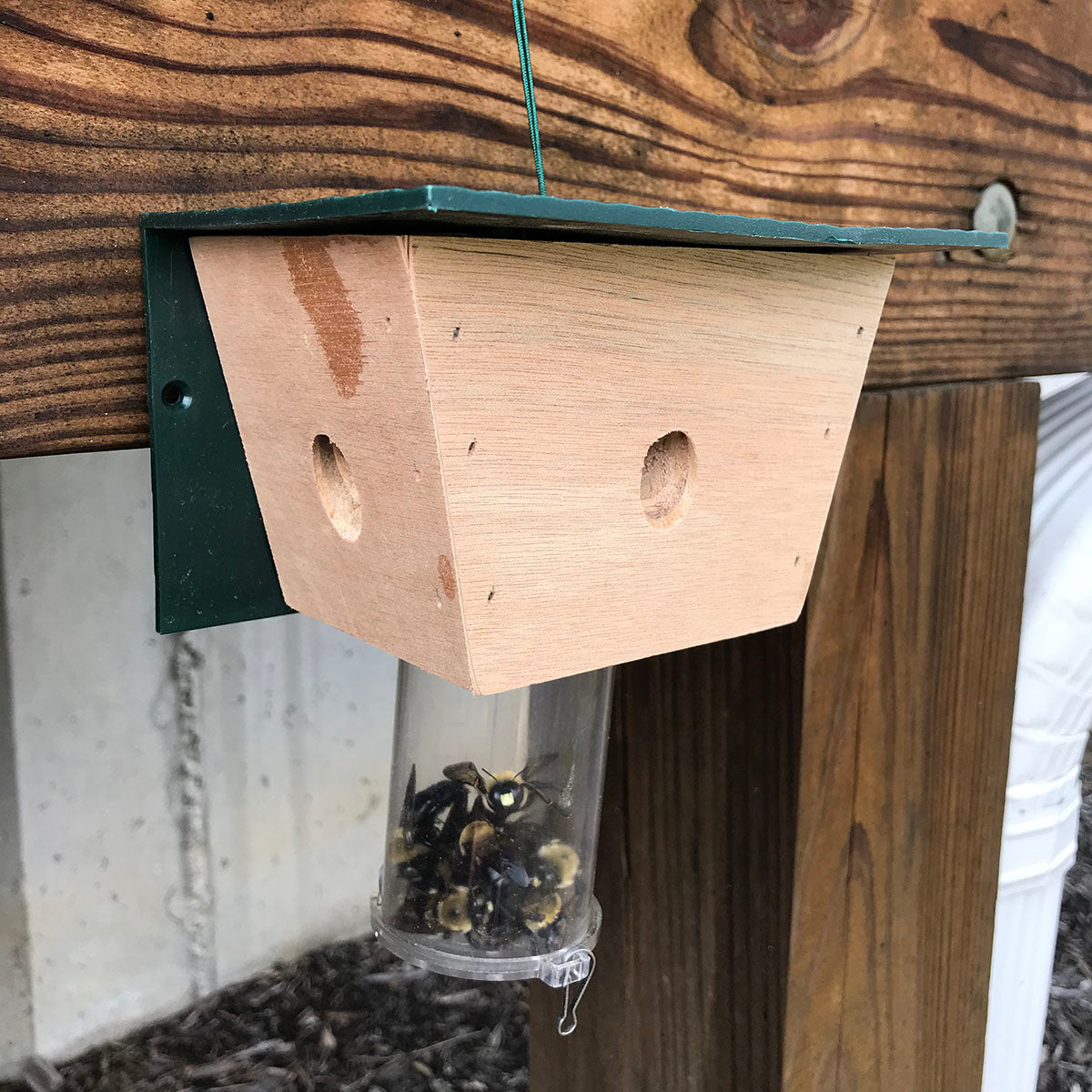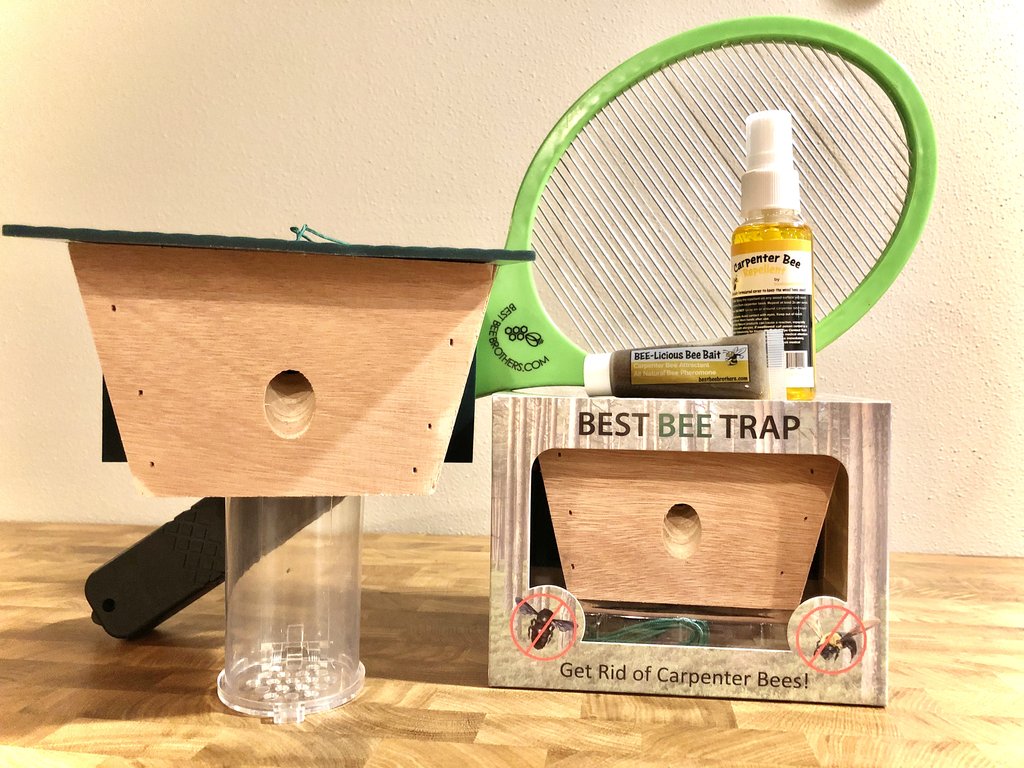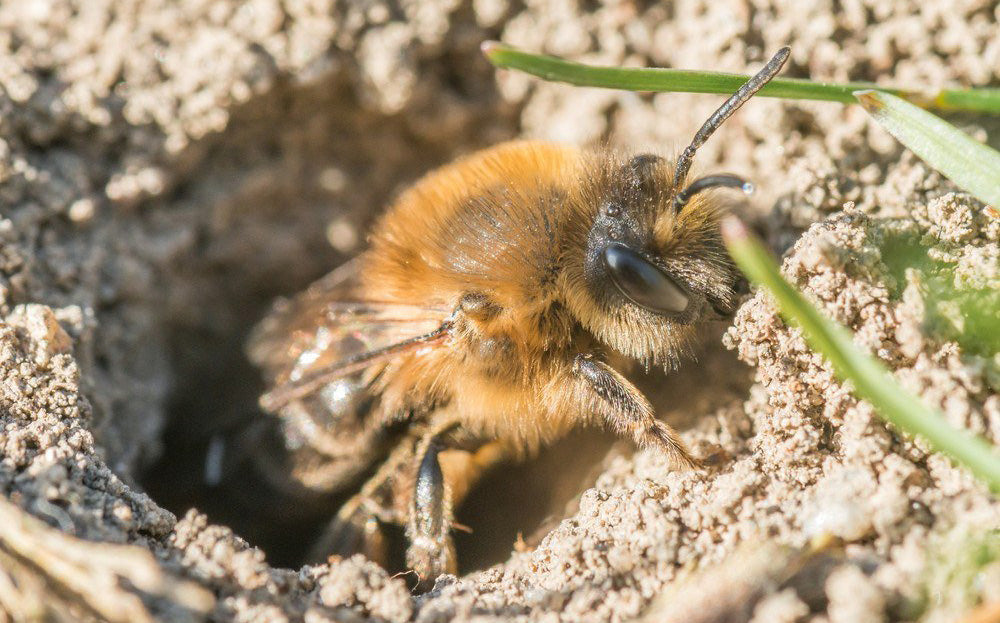Carpenter Bee Trap Lifespan & Warning Signs
The Best Bee Trap and the Pine Wood Carpenter Bee Box Trap generally require replacement every 2–3 years. This number can vary depending on the trap’s exposure to the elements and whether the trap was left out over winter. The longer the trap is outside, the faster it will deteriorate.

Remember, the trap is built to attract carpenter bees only. It is made of softwood and emits a natural scent. The traps are made without chemicals that can deter carpenter bees, so there is no protectant on the wood and no heavy-duty glues to keep pieces in place. By design, the natural composition of the trap effectively attracts carpenter bees.
Below are a few signs it is time to replace your carpenter bee trap:
Warped Wood
On the Best Bee Trap the softwood is untreated, so after a few years it can warp from water and sun exposure. You may notice the green roof no longer sitting completely flat on the wooden base. If there is a gap greater than ½″ between the roof and base, then it is time to replace the trap. This gap could let carpenter bees escape the trap, rendering it far less useful.
On both the Best Bee Trap and the Pinewood Bee Box Trap, the exterior wood may start to peel or flake off after too much water exposure. This is especially prevalent in areas with plentiful rain in summer and below-freezing temperatures in winter. The wood will expand and shrink and then eventually splinter. But the chipping wood is an issue only if the trap starts to fall apart. You don’t want a trap full of dead and live carpenter bees to suddenly fall down and burst open!
Crooked or Broken Plastic Receptacle
On all styles of the trap, the bottom receptacle should be vertically aligned. If the plastic catch container sits on an angle of any sort and can’t be readjusted, then it’s time to replace the trap.
It is also time to replace the trap if the plastic container is cracked or has holes. This can happen from either weather or rough handling of the trap. The holes and cracks can lead to the carpenter bees’ escaping.
To preserve the integrity of your trap, try to limit its exposure to outdoor elements. Placing traps in locations that are underneath overhangs may help. Also, be sure to bring your traps inside during the winter. Empty them of the dead carpenter bees and store the traps in a cool, dry place like a garage or basement.
As always, if you have questions about your trap, email us at customersupport@bestbeebrothers.com.









8 comments
Customer Support
@Craig – You are right, males are aggressive and they may divebomb like they are now. However, they don’t sting. The best advice we can give you is to whack them down and place them in the trap so they release pheromones to attract others. And keep filling those holes! ~Customer Support
Craig
Question: I see where you suggest to plug up the nests before hanging the traps. If I do this won’t the males,(about 9 or 10 dive bombing us daily), attack?
I have found 5 or 6 nests and plan on plugging them first, and then watching the others to find theirs.
Edward Seuffert
I purchased these bee traps about 3-4 years ago. My bee problem was so bad that I swept up 2 -3 full dustpans of wood shavings every month. After figuring out the best areas for the traps, 95% of the problem has been solved. Great product, good job. I am purchasing 10 new traps and replacing the old ones.
Leave a comment
All comments are moderated before being published.
This site is protected by hCaptcha and the hCaptcha Privacy Policy and Terms of Service apply.